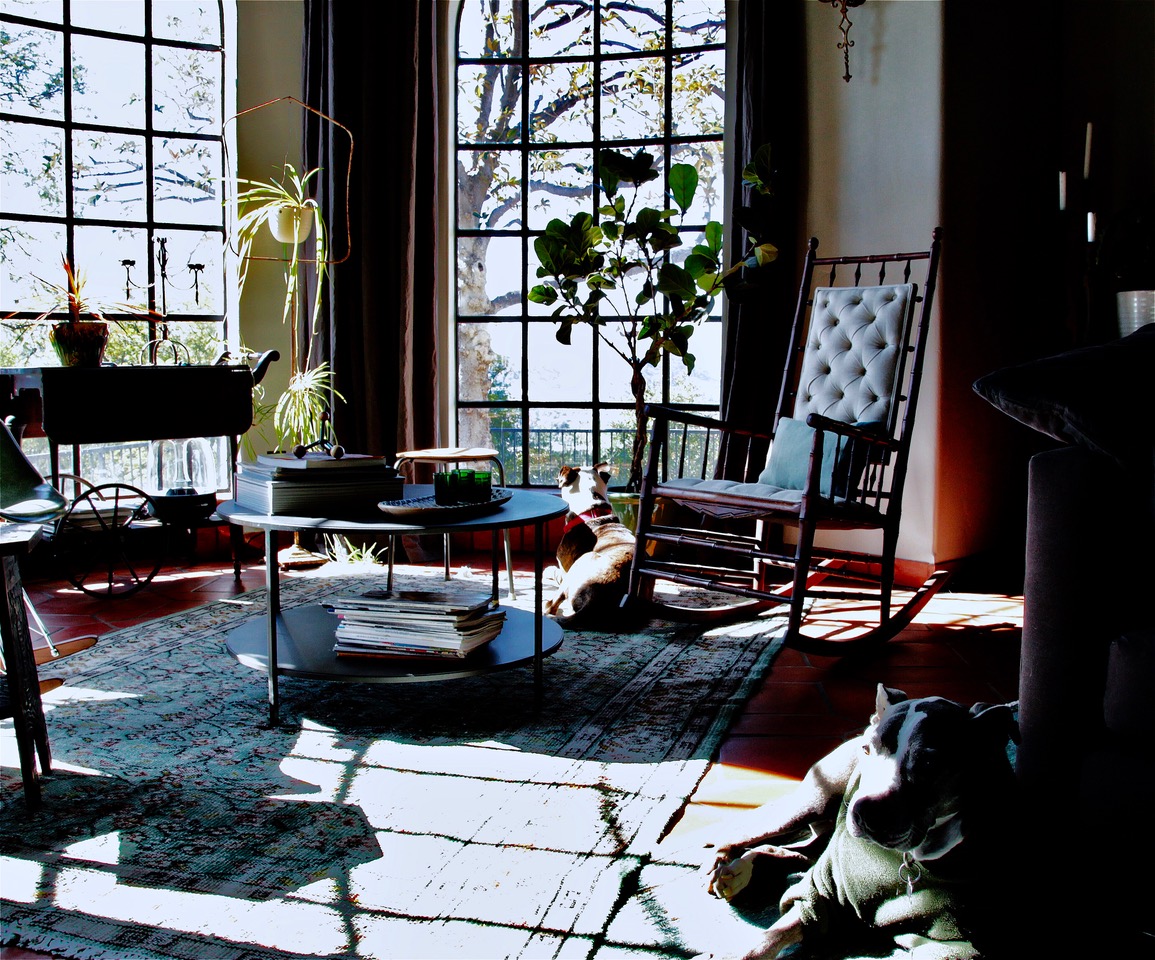Kelly Newfield is an artist, clothing designer, creator of bespoke cushions, and loving momma to Vida and Clara, two sweet old lady pit bulls, in no particular order of importance. Because Los Angeles animal rescue is essentially a massive Venn diagram and we're basically six degrees removed from "that overweight black lab relinquished at South LA Shelter" (specific shelter dog reference subject to change), we frequently cross paths with others sharing our obsessions for all wonderful things dog and design. Naturally, Kelly's newest creative project, Dressmaker - designing and producing hand-dyed, cut, and sewn one-of-a-kind luxury pillows, immediately had us both intrigued and salivating like lunatics because we want ALL THE DRESSMAKER THINGS, people.
Kelly graciously took a few moments away from creating her stunning, sophisticated pillows in her Pomona studio to divulge what's currently on her nightstand, how we can live a beautiful life with our dogs, and her theory on "trends." Thank you so much, Kelly, for agreeing to be a part of our ongoing SHAPERS profiles featuring extraordinary doers and makers ! We dig you and all your gorgeous textile ingenuity.
Were you the kid always stitching up awesome outfits for yourself and your friends? How did you transition from clothing to home decor/pillows? Do you feel there's a comprehensive overlap of these two types of couture craftsmanship?
I did start altering my clothing from an early age, I think out of a need to create and self-express. The cushion project came about out of necessity (as most things do). I made some velveteen cushions for my living room, and thought, I like these, maybe someone else would like these, too. Also the idea of being able to experiment with textiles, without the limitations that come with clothing (wearable colors, sizes, etc)…is very appealing. Craft, quality and integrity of design are profoundly important to me. Making things one at a time, slowly and thoughtfully. Designing and making things has always been therapeutic for me. It doesn't really matter what it is; a dress, a room, a meal, a garden. I have this irritating habit of redesigning (in my head, of course) the front yards of the houses that I drive past in my neighborhood.
Just a coupla' cute old ladies from Los Angeles' animal shelters, enjoying their best lives.
As a dog momma, what's your advice to people who feel like they "can't have nice things" because they have a dog?
Adopt adult dogs, and set boundaries. Never give a new dog the run of the house, let them earn their privileges Dogs are smart, they’ll get it quickly if it’s presented clearly.
Also, being somewhat flexible (about everything, really) is helpful. Don’t get upset if someone vomits on the rug, or sneezes on a freshly painted wall, just deal with it and move on.
It's a beautiful life.
Are you a morning person or a night owl?
Night owl but I've had to adapt. My husband makes breakfast for the dogs. It’s best (for everyone!) if no one tries to communicate anything important to me before 8am.
What's on your bedside table right now?
Other Minds: The Octopus, the Sea and the Deep Origins of Consciousness, by Peter Godfrey-Smith, Being a Beast: Adventures Across the Species Divide, by Charles Foster, and The Developing Genome by David S. Moore. I am fortunate that my husband brings home a stream of fascinating books.
Name your three favorite textile colors.
I favor cool, moody colors, my working colors could be considered a “bruise” palette: combinations of weird greens, chartreuse, blue violet, greys from dove to charcoal, and of course black.
Do you foresee any particular, imminent trends in the home decor industry?
I go out of my way to avoid trends. Even the word “trend” bothers me, and don’t even get me started on “trending”. I am happiest when the things that I like (Victorian, Spanish Revival) are not in style and I can find them easily and marked-down in the antique shops. The same goes for designing clothing. Ideas will naturally evolve from season to season. Try to incorporate trends and you will quickly lose your way and your own vision.
MORE KELLY SCOOP: I am from Los Angeles. My husband and I moved from Mid-city LA to a historic home in Pomona, Ca a few years ago to be closer to his professor job at Pitzer College in Claremont. I went to art school and am mostly self-taught as far as clothing design. I have been designing, manufacturing, and selling wholesale to specialty boutiques and better department stores for 25 years – mostly women's clothing, and mostly for my own label. My current label for clothing is Volunteer, although lately I have been focusing more on the cushions, and working on restoring/furnishing/painting our old house. My 98 year old mother also lives with us. I have been involved with animal rescue in LA for the past 15 years and we have two seniors, Vida (from East Valley Shelter) and Clara (Inland Valley Humane Society). My girls share my workspace. They are sweet and hilarious and good at reminding me daily about what is actually important.
*Lily Spindle's SHAPERS profiles the people whom we consider to be remarkable movers and shakers, doers and dreamers, trailblazers and big thinkers, the people who are doing things a little bit differently and unconventionally, with immense heart, passion, and authenticity. Artists, designers, writers, philanthropists, iconoclasts, artisans, heroines, voyagers, and all kinds of extraordinary extraordinaires will be interviewed in our SHAPERS series.










































